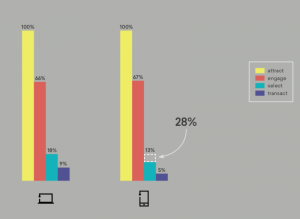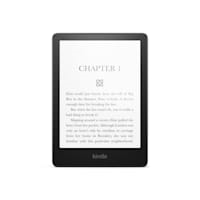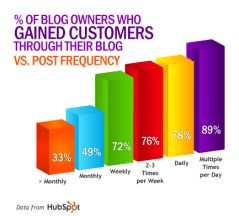As an Amazon seller, your product listing is your shopfront. Like a store display attracting buyers, your listing title and product images on the search result page get shoppers to click. Customers can then get complete information about your product on the product page with a detailed description, bulletin features, ratings/reviews, and visual media like A+ content & additional images.
Amazon listings provide all the information needed to make a purchase, therefore, it is paramount that you write your listings in a way that’s both attractive and informative. A fully optimized product listing drives more targeted traffic, increases conversion rates, and encourages positive product reviews.
It is most important to remember that your listings not only have to be SEO friendly and comply with all Amazon content guidelines but also connect with the searchers to convert them into potential buyers and brand advocates. Let us look at some of these key content writing factors that will make your Amazon listings stand out:
- Product title: Product titles are the very first visible component of your listings. They not only provide the shoppers with relevant information but also encourage them to click on your listing to find out more. Although Amazon permits 200 characters for most categories, the placement of keywords within this space is what makes a world of difference.
As effective tips to improve the quality of your titles, you must- Include prominent decision-making factors as long-tail keywords: In order to lure the consumer to click on your product, it is important to include certain words in the title that will influence their purchase decision positively. To determine which are the most relevant & highly searched for keywords for a product, do not simply rely on product understanding and brand language. Instead, employ a data-first, detailed keyword research approach and also undertake competitor keyword analysis to capitalize on all such relevant terms.
- Explore A/B Testing or Experimentation: Ensuring that you select the most compelling titles is a key factor to the success of your listing on Amazon.
- Make your titles mobile-friendly: The most important features of your product should ideally be included in the first 80 characters of the product title. Beyond this limit is when the titles start getting truncated on mobile view. This will help drive higher click-through rates on the mobile app and browser.
- Include prominent decision-making factors as long-tail keywords: In order to lure the consumer to click on your product, it is important to include certain words in the title that will influence their purchase decision positively. To determine which are the most relevant & highly searched for keywords for a product, do not simply rely on product understanding and brand language. Instead, employ a data-first, detailed keyword research approach and also undertake competitor keyword analysis to capitalize on all such relevant terms.
- Bullet-point section: Product features are one of the most important elements of product listings. Some key tips to make your bulletin features informative, yet easy-to-digest are:
- Use of descriptive headers: This will help you capture the main idea of each product’s feature/benefit. Amazon shoppers might not go through your entire listing, therefore, it is helpful to start off each point with a header. Also, keep your bullet points concise with only the most essential information, and include every feature that distinguishes you from your competitors to encourage quicker buying decisions.
- Creating buyer-persona-based content: Simply listing the features won’t make your listing attractive. Think like a customer to determine what is most important in terms of benefits and highlight that first. This is necessary to capture interest in the short attention span, communicate the product’s USP effectively, and provide relevant information without sounding like a product catalog to the reader.
- Go for content customization based on target audience: Once you understand your target demographic and focus your content on how your consumer would like to read it, you can also curate targeted content. You need to analyze consumer demographics data, through the use of Amazon-specific tools like Brand Analytics, Amazon Pi, etc. This data, coupled with customer search/ keyword data, can give a lot of valuable insight into how your content strategy should be created.
- Product description: The product description section is the place where you can give your consumers a detailed account of the products and showcase their important aspects. It helps in gaining customer’s trust by explaining product information while also sparking shopper’s curiosity and interest in them. So, how can you write product descriptions that are compelling and unique enough, to stand out from another competitor’s listing? For that to happen, the product description should:
- Be in a readable format like Q&A: Keep your product description comprehensive and accurate. Instead of a big chunk of text without sufficient breaks, the description should answer distinct questions or include separate paragraphs with headers. Especially in the case of the Amazon mobile shopping app, the description often appears before the bullet points; so it must be easy to read and include the most relevant points.
- Address consumer’s pain points and fulfill their expectations: Utilize the customer sentiment and language while creating content to make the product more relatable. This will help strengthen customer trust, make them feel more confident about the product, and set the right expectations.
- Product attributes: Utilize and populate all product attributes in the backend. Amazon backend keywords are keywords that can be applied to listings in order to boost their ranking and discoverability. This is required as in many categories, Amazon provides a separate section highlighting key product attributes such as Brand, Fabric, Size, Ingredients, etc, to allow customers to make quick purchase decisions. The backend search terms and attributes will allow your listings to rank in the search result but won’t bog them down with too many keywords. Including the right product attributes in the backend will optimize your listings to reach valuable leads.
- Periodic update of keywords: Make sure to update your keywords from time-to-time. This is important to identify gaps in existing content and optimize it according to the latest search behavior. This strategy helps you to periodically make changes to the optimized content and incorporate newer keywords that have now started to appear in customers’ searches or are showing a growing search volume history trend. Make use of this strategy when you need to create topical content for special occasions, the holiday season, or even events on Amazon.
All in all, product listing’s content should focus on both SEO and user-friendliness aspects. Using the above-mentioned tips, you can create a much more effective content strategy on Amazon. This will not only boost your Amazon ranking and ultimately sales, but also enhance brand awareness and recognition.
Digital & Social Articles on Business 2 Community
(48)
Report Post






